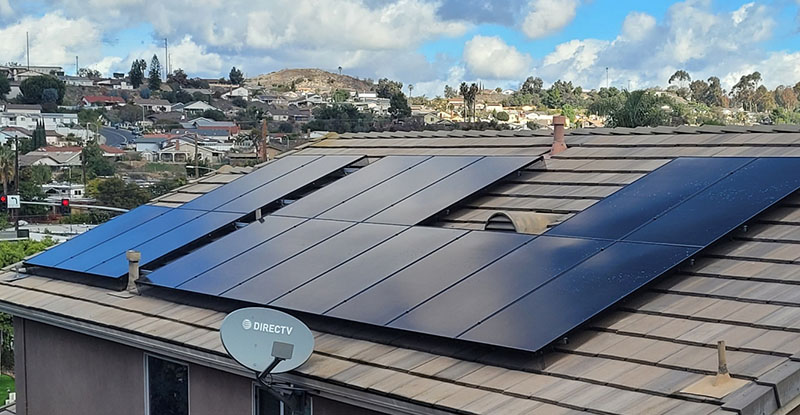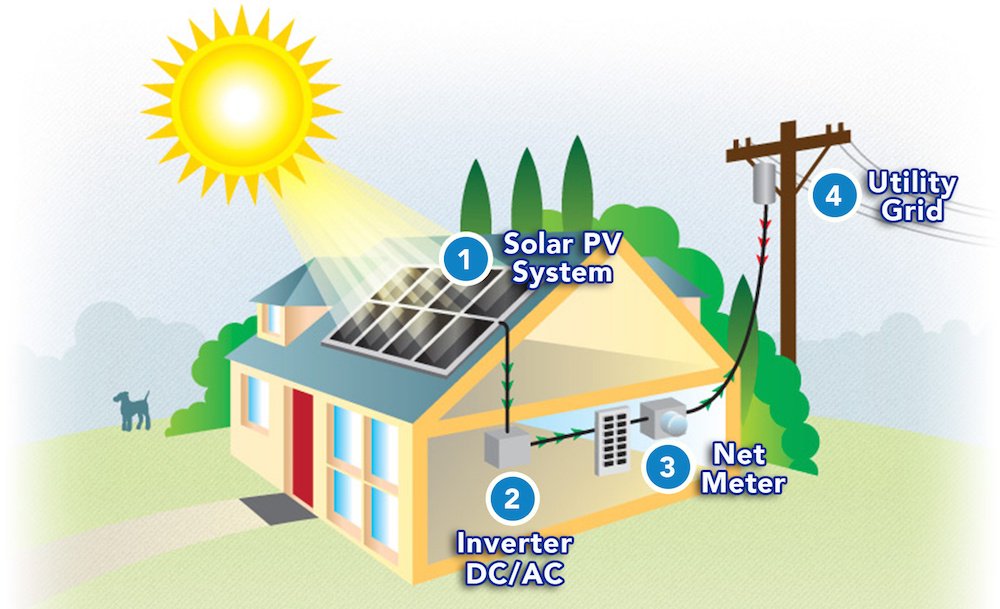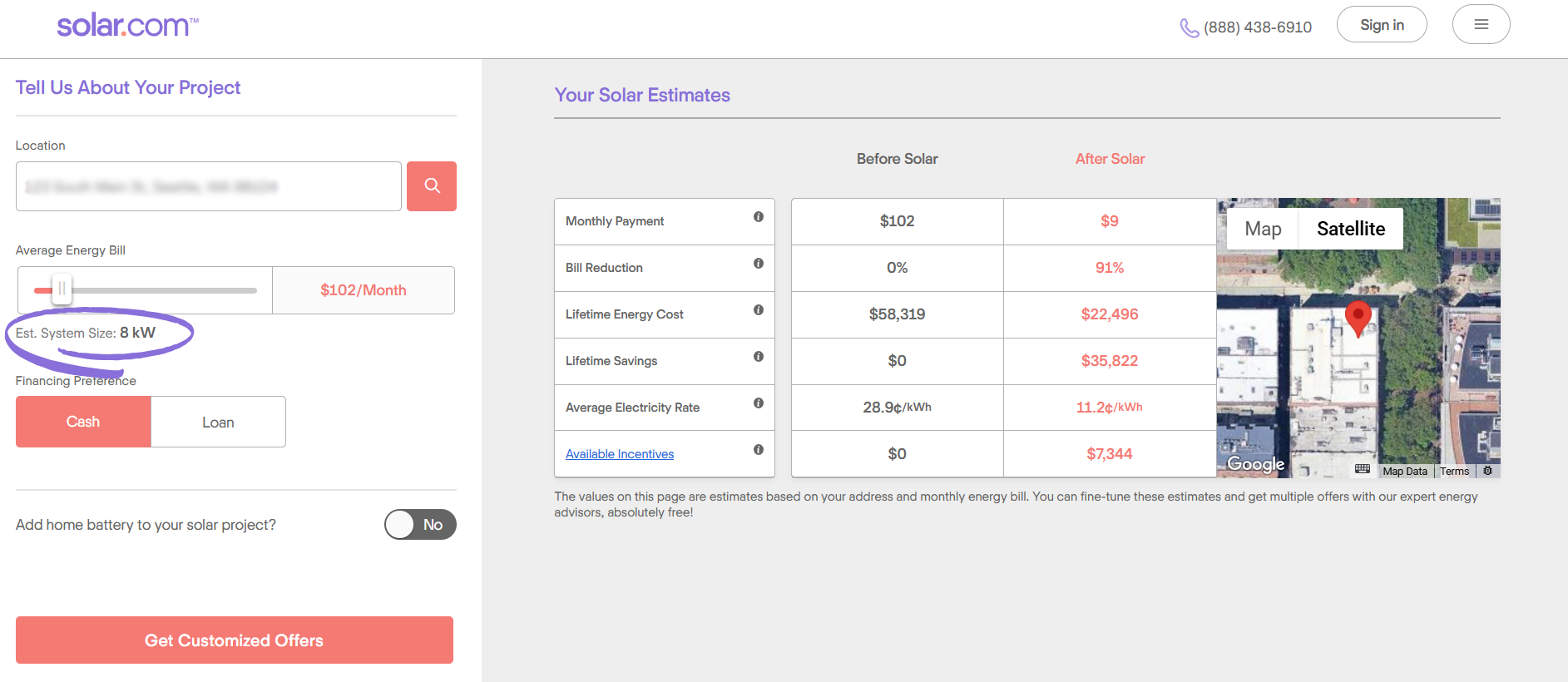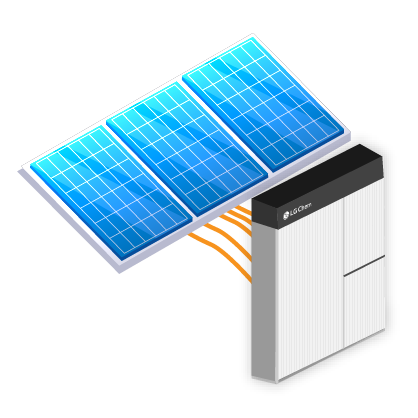Can I Use Solar Panels Without Battery Storage?
With all the buzz about energy storage, you might be wondering if a solar battery bank is essential for home solar systems. Can you even use solar panels on your home without battery storage?
The short answer is, yes you can. Although there are several advantages to having a solar battery backup, it’s not essential for everyone. In this article, we’ll explore some scenarios in which having battery storage with solar panels is beneficial, and some in which sticking with simple rooftop solar panels could be the way to go.
How to Use Solar Panels Directly Without Battery Storage
If battery storage isn’t in the cards for now, don’t worry! You can still use your solar panels to power your home without battery storage. In fact, a majority of home solar systems aren’t connected to battery storage.
Here’s how it works:
Early morning and evening are times with lower solar production, but higher energy needs. During these times (and especially at night) solar owners without battery storage draw power from the grid, which acts as a giant energy backup system.
But during the day, your solar panels are likely providing more than enough energy to power your home. The excess energy is sent into the grid to power your local community, and you receive credit from your utility for contributing clean energy to the grid.
Simply put, when the sun’s shining, you use your own solar power and send excess power to the grid; when it’s not, you draw from the grid.
This kind of setup is called a grid-tied system. You essentially use the local utility grid as a battery to “store energy” without needing a solar battery bank in your home. If you have your own battery storage, you likely won’t transfer much energy to or from the grid. You store your own energy and pull from that, and the grid serves as a backup to the backup.

Net energy metering
If you live in a state with net energy metering, you earn credit for sending your excess energy to the grid. At the end of the year, those credits are used to offset the cost of the energy you pulled from the grid. With just a recent energy bill, solar.com can generate multiple quotes for solar systems that offset 100% of your electricity use.
That means instead of paying for grid energy, you’re only paying for your solar equipment. And once you’re equipment is paid off, you’re paying nothing for electricity!
How can I determine the right solar system size for my home?
Residential solar systems are sized based on your annual electricity usage. Typically, the goal is to offset 100% of the power you use throughout the year to replace your ever-rising utility rate with a flat, low cost of using solar power generated on your roof.
Solar system sizes are influenced by your current and future electricity consumption, sun exposure, and roof space. Use our solar system size calculator to easily find out the right size solar system for your home based on your location and average electricity bill.
What are the best solar panel brands for systems without batteries?
The top solar panel brands in 2025 include REC, Q Cells, and Silfab, all of which are great options for solar-only systems. In addition to outstanding track records for quality, performance, and durability, these companies have established supply chains outside of China and have minimal exposure to recently updated Foreign Entities of Concern (FEOC) rules that are causing pricing and reliability concerns in other manufacturers.
Check out our Best Solar Panels for Homes rankings to see which modules stand above the rest.
Do I Need Battery Storage For My Solar System?
In many cases, battery storage is a “nice to have” with solar panels for home use. However, there are a growing number of scenarios where having a solar battery bank is beneficial, if not completely necessary.
Scenario #1: You experience frequent or prolonged power outages
First, if you live in an area with one or more of the following, battery backup is a good idea.
- An unreliable power grid
- Frequent natural disasters
- Public Safety Power Shutoff events (PSPS)
A home battery bank is especially crucial if you have essential systems — like medical equipment or an electric well pump — that you need to power when the grid is down. In fact, the Self-Generation Incentive Program (SGIP) in California offers rebates up to 100% of the cost of battery storage for Californians in these circumstances.
Florida is another state where frequent and prolonged power outages make solar and battery systems beneficial.
Related: How Long Can Solar Battery Power a House During an Outage?
Scenario #2: Your utility buys your solar power for less than it’s worth
Most utilities will compensate you for the excess solar power you send to the grid — the question is how much they’ll pay you for it. Some utilities offer an equal swap, making it easy to fully offset your electricity bill. However, more and more utilities are lowering their solar compensation rates.
In places with poor solar compensation (most notably California), it’s much more cost-effective to store your solar power in a battery than to sell it to the grid for less than it’s worth. So, your battery system can back up your home and improve the economics of going solar.
Scenario #3: Your utility has Time of Use rates
In some places, the price of grid electricity fluctuates throughout the day based on demand. This is known as time of use rates, or TOU.
Typically, electricity is most expensive in the evening when people are home cooking, watching TV, and running heat or AC. Unfortunately, solar production isn’t great in the evening, and solar owners end up pulling from the grid.
With battery storage, you can avoid buying expensive “On Peak” grid electricity by pulling low-cost solar electricity from your battery. This is especially beneficial if you have large electrical loads such as electric heat, air conditioning, or an electric vehicle.

Scenario #4: You want to be energy independent
If you live in a remote, isolated area without a central utility grid, you will need a battery storage device to capture your solar generation for later use. This is essential if you want to have the lights on at night when your system isn’t generating.
Even if you are within reach of a utility grid, many people prefer to generate and store their own clean electricity. Most utilities rely on fossil fuels to generate electricity. By pairing solar and battery storage, you reduce the demand for dirty energy.
Is It Okay to Use Solar Panels Without Battery Storage?
Absolutely! In fact, most home solar systems are currently operating without battery storage. If you’re fine with drawing from the grid and not particularly worried about power outages, you might not need a battery.
However, there are benefits to having battery storage for your solar panels — and they are becoming increasingly common. In addition to backup power, battery storage is becoming more beneficial as net metering policies change and more utilities adopt time-of-use rates. It’s also a means of achieving energy independence and ditching fossil fuels altogether.
What is the environmental impact of using solar panels without batteries?
The environmental impact of mining and disposing of battery materials does increase the footprint of solar, but it does not outweigh the massive carbon savings compared to using grid electricity from fossil fuels. The lowest-impact option remains grid-tied solar without batteries, unless backup power or time-shifting is critical.
Based on data from the National Renewable Energy Lab and the International Energy Agency, the lifecycle emissions of solar-only systems are 20-40 grams of CO2 per kilowatt-hour of electricity produced. Adding battery storage increases that figure to 50-100 g CO2/kWh.
For comparison, the average U.S. grid electricity mix is associated with ~370 g CO2/kWh and is much higher in areas that rely heavily on fossil fuels to generate power.
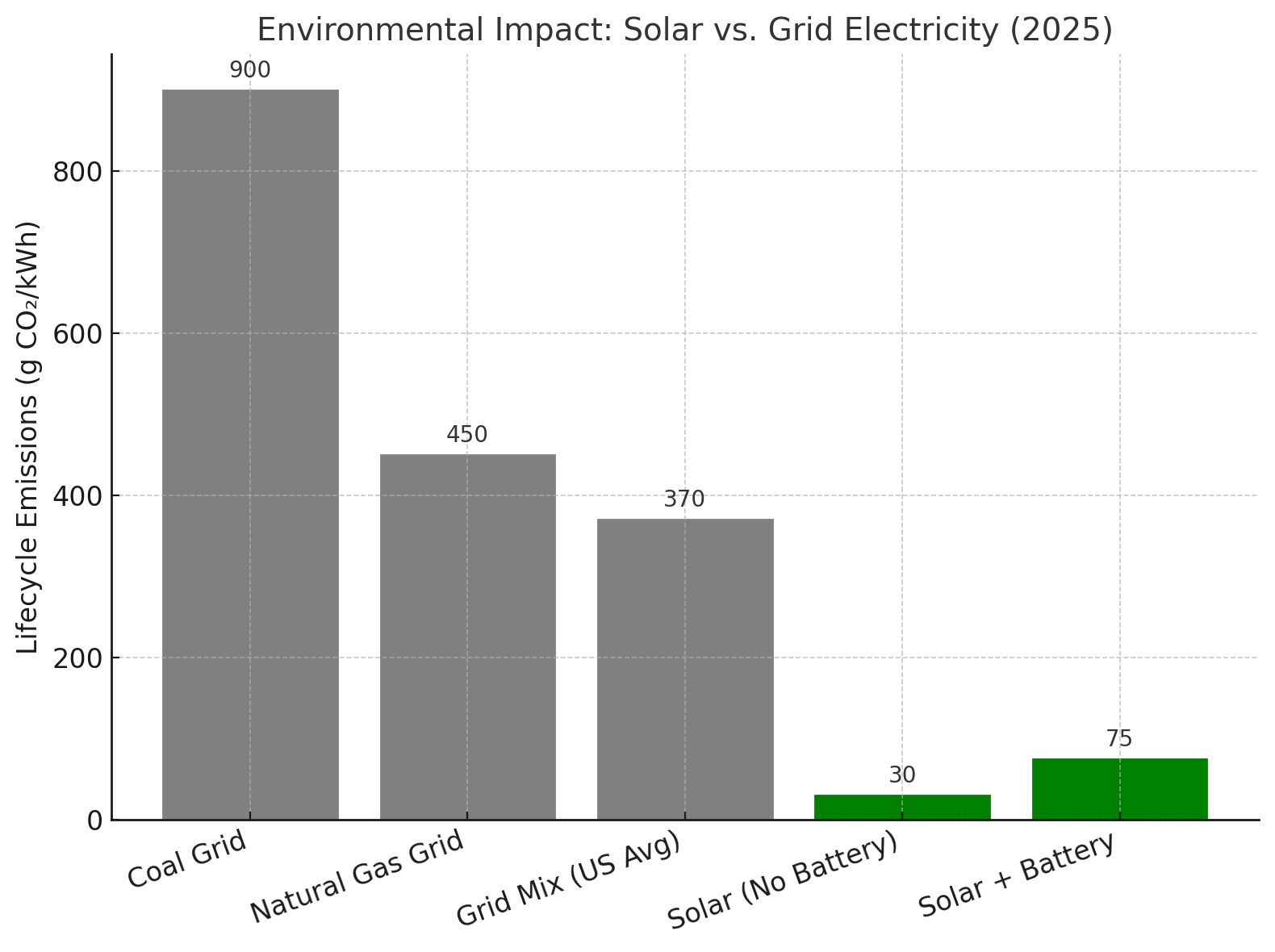
Frequently Asked Questions
Can I use solar panels and inverters without battery?
Yes, if you are connected to an electrical grid, you can use solar panels and inverters without battery storage. However, it’s important to note that grid-tied solar systems are usually shut off during power outages to prevent the backflow of electricity from harming utility workers.
A few inverter manufacturers, namely Enphase and SMA, have products that allow you to directly power essential loads during blackouts even without battery storage. This is called “islanding” your solar system.
How does solar work without batteries?
Without battery storage, solar systems typically use the utility grid as a battery. Solar energy is first used to directly power your home, and the excess energy is pushed onto the local grid to power neighboring systems. When the solar system is underproducing, the home draws electricity from the local grid.
Through net metering, homeowners earn credit for the excess energy to offset the energy they pull from the grid. This allows solar owners to essentially replace their electricity bill with lower payments on their solar system.
How to store solar energy without batteries?
Storing solar energy without batteries is easier than it sounds. In most residential settings, excess solar energy is “stored” on the local utility grid. And by “stored,” we mean used to power your neighbor’s house. You earn credit for the solar energy you share with the utility grid to offset the cost of using grid electricity at night.
This not only reduces demand from the central utility, but it also reduces wear on the grid because the electrical current travels less distance.
For commercial applications, there are a number of ways to store solar energy without batteries. According to the EPA, these include:
- Pumped hydroelectric
- Compressed air
- Flywheels
- Thermal energy storage
Potential energy comes in many forms — not just rechargeable batteries!


